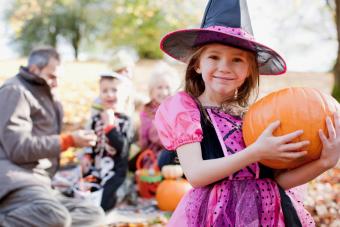
The Day of the Dead (Día de Los Muertos in Spanish) is a Mexican holiday that embraces death and celebrates life. Dia de Los Muertos is celebrated in Mexico and among people of Mexican descent around the world on November 1st and 2nd.
What Is Day of the Dead?
Day of the Dead celebrations are often confused with Halloween, but it's not a Mexican version of Halloween. Celebrations begin on the day after Halloween and continue through November 2nd. According to tradition, the gates of heaven are opened at midnight on October 31st. November 1st is the Day of Little Angels or Día de Los Angelitos. This day is dedicated to infants and children who have died. The following day, Dia do Los Muertos, is dedicated to remembering the lives of all deceased family members.
Celebration of Life
The Day of the Dead is not a sad, somber occasion; it a celebration of the lives of loved ones and family who have passed away. It embodies the spirit, wit, and sense of humor Mexico is known for. Día de Los Muertos is a bright and colorful time filled with happiness and celebrations of life. There are beautifully decorated altars, bright, colorful flowers, and Day of the Dead parties. People wear intricate sugar skull and calaveras makeup and dress in costumes just as elaborate.
Day of the Dead Origin and History
Día de Los Muertos is a blend of Mesoamerican ritual, Catholicism, and Spanish culture. The roots of the Day of the Dead celebrated in contemporary Mexico and among those of Mexican heritage throughout the world go back about 3,000 years to pre-Columbian Mesoamerica's rituals honoring the dead.
The Aztecs
The Aztecs and other people living in what is now central Mexico saw death as an ever-present part of life. The Aztecs believed the soul was indestructible. Therefore, the soul entered the afterlife when the body died. Those souls were thought to take a journey, and while on this journey, they met dangerous challenges before reaching their final resting place. It was honorable for the families of the deceased to provide the necessary supplies and tools for their dead loved one's passage. The provisions for this journey to the afterlife are the foundation of the ofrendas (offerings) of food, water, symbolic items, and memorabilia placed on altars during today's Día de Los Muertos celebrations.
Catholic Church Influence
In the 9th century, Pope Gregory III moved All Saints' Day to November 1st. Finally, in the 11th Century, Pope Urban II established All Souls' Day on November 2nd for all dead Christians. As Catholicism spread across Europe, the Church unofficially accepted certain pagan rituals for All Souls' Day. The pagan traditions in Medieval Spain are especially important to many Day of the Dead practices.
Pagan Traditions of Medieval Spain
A few pagan Spanish traditions included in All Souls' Day were:
- Taking wine and specially prepared bread to graves that were covered in flowers
- Lighting lamps so souls could find their way back to their earthly homes
- Setting a fine table and preparing a special meal for the visiting spirits
- Providing a clean bed where the deceased could rest before returning to paradise
The Spanish Conquer the Aztecs
The Spanish conquered the Aztec empire in the 16th century. This led the Catholic Church to move indigenous rituals that honored the dead to the Church dates that commemorate All Saints' Day and All Souls' Day. Mesoamerican and Spanish pagan rituals and beliefs about death fused with these two holidays to create Mexico's Day of the Dead.
Countries That Celebrate Day of the Dead
Mexico is the country known for Día de Los Muertos. Many Latin American countries also celebrate the Day of the Dead. Among them are Ecuador, Columbia, Brazil, Honduras, El Salvador, Venezuela, Nicaragua, and Peru. Although customs and names vary, the intentions are the same. But none of the celebrations are as vibrant and colorful as those of Mexico.
Day of the Dead Celebrations in the United States

Day of the Dead is celebrated much like it is in Mexico by many U.S. cities and communities. In Texas, New Mexico, Arizona, and California, the celebrations tend to be mostly traditional. Still, many U.S. cities have Day of the Dead festivals and parades, including:
- Chicago Illinois
- Fort Lauderdale, Florida
- New York City, New York
- Breckenridge, Colorado
- Raleigh, North Carolina
- Birmingham, Alabama
Day of the Dead and Pop Culture
Día de Los Muertos was traditionally a more intimate family occasion to spend with dead loved ones. There are graveyard vigils and altars decorated with pictures, flowers, and food and drink offerings. In recent years, however, Day of the Dead has moved out of graveyards and private homes and into pop culture with celebratory parties and parades. Look for a celebration near you to learn more about this unique holiday.







